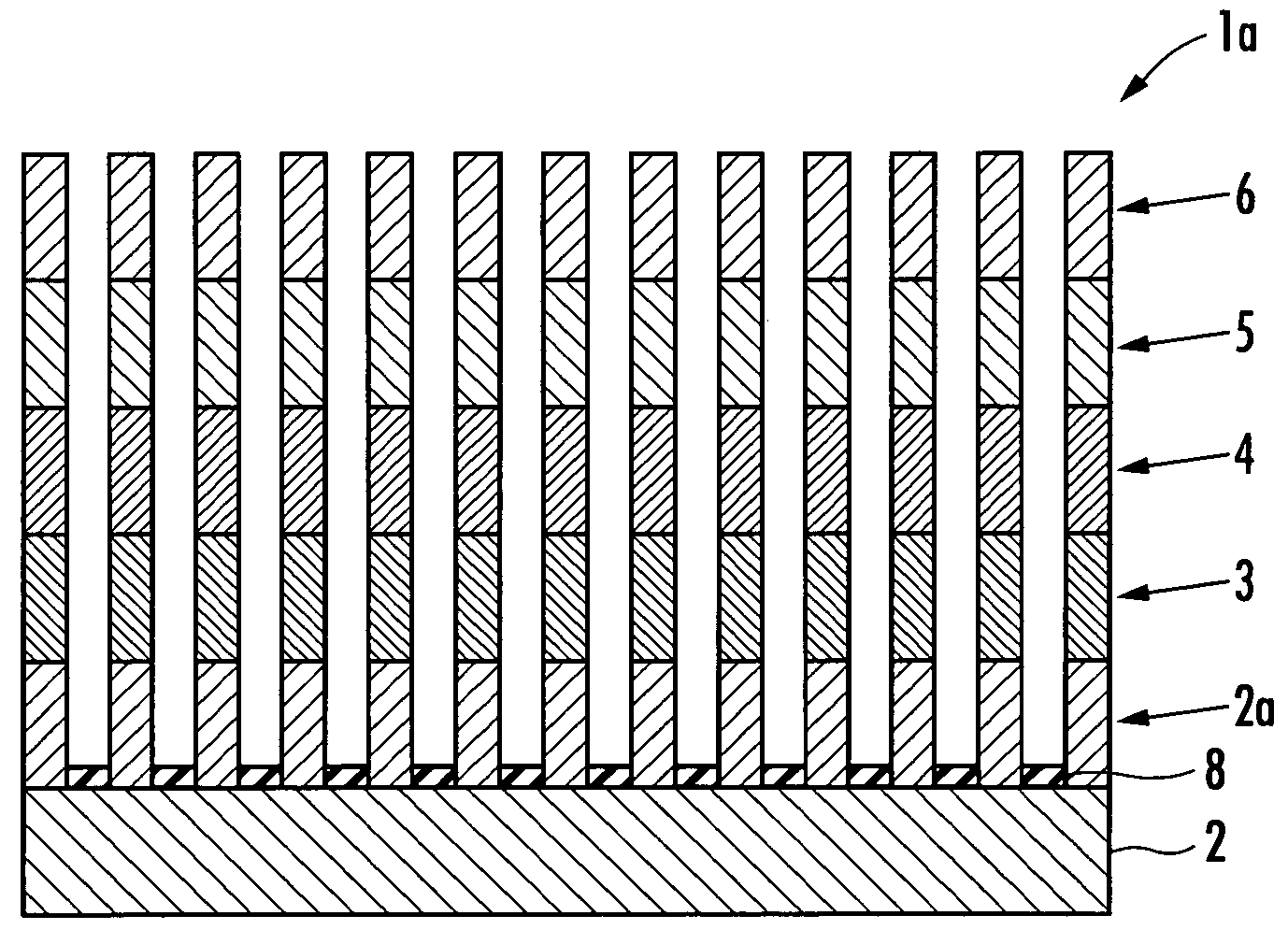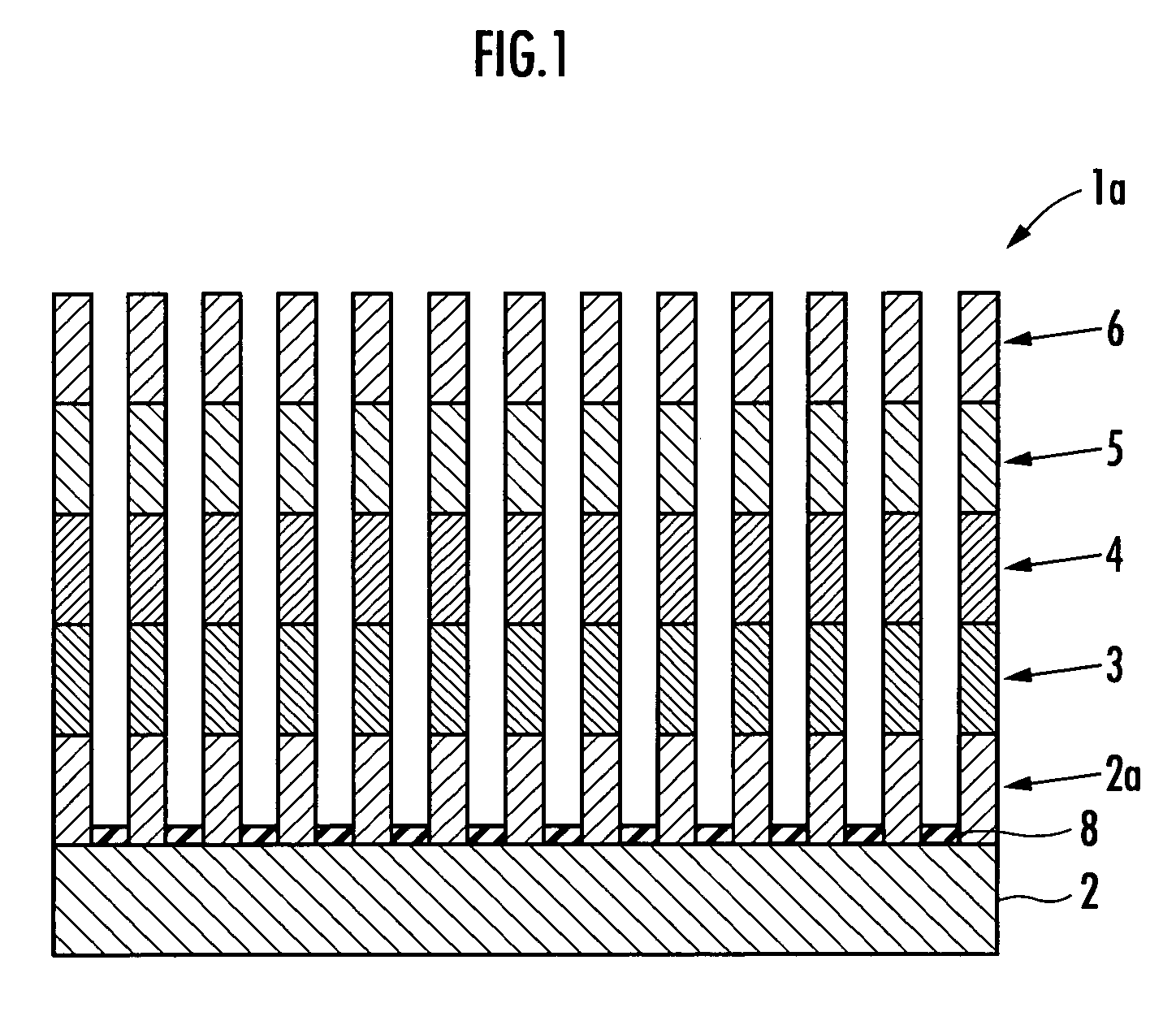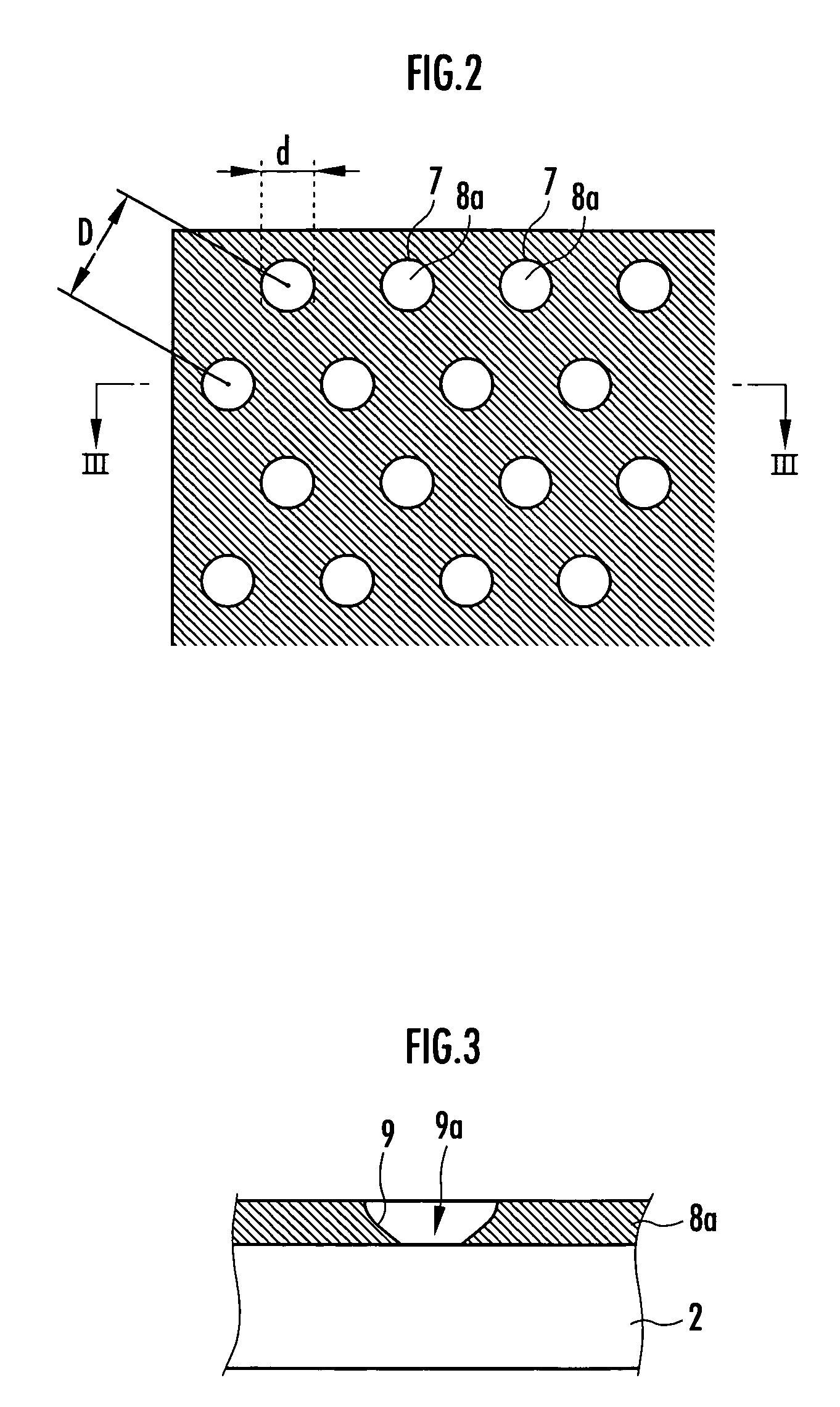Method for producing multijunction solar cell
a solar cell and multi-junction technology, applied in the direction of basic electric elements, electrical apparatus, semiconductor devices, etc., can solve the problems of reducing crystal quality, and achieve the effect of increasing the area of the devi
- Summary
- Abstract
- Description
- Claims
- Application Information
AI Technical Summary
Benefits of technology
Problems solved by technology
Method used
Image
Examples
Embodiment Construction
[0039]Next, the embodiments of the present invention will be described in more detail with reference to the attached drawings.
[0040]As shown in FIG. 1, a multifunction solar cell 1a obtained by the production method of the present embodiment comprises a substrate 2, a first semiconductor 2a grown in the shape of a wire on the substrate 2, a second semiconductor 3 which is connected to an end located farther from the substrate 2 of the first semiconductor 2a and is grown in the shape of a wire, a third semiconductor 4 which is connected to an end located farther from the substrate 2 of the second semiconductor 3 and is grown in the shape of a wire, a fourth semiconductor 5 which is connected to an end located farther from the substrate 2 of the third semiconductor 4 and is grown in the shape of a wire, and a fifth semiconductor 6 which is connected to an end located farther from the substrate 2 of the fourth semiconductor 5 and is grown in the shape of a wire. In the multijunction so...
PUM
 Login to View More
Login to View More Abstract
Description
Claims
Application Information
 Login to View More
Login to View More - R&D
- Intellectual Property
- Life Sciences
- Materials
- Tech Scout
- Unparalleled Data Quality
- Higher Quality Content
- 60% Fewer Hallucinations
Browse by: Latest US Patents, China's latest patents, Technical Efficacy Thesaurus, Application Domain, Technology Topic, Popular Technical Reports.
© 2025 PatSnap. All rights reserved.Legal|Privacy policy|Modern Slavery Act Transparency Statement|Sitemap|About US| Contact US: help@patsnap.com



